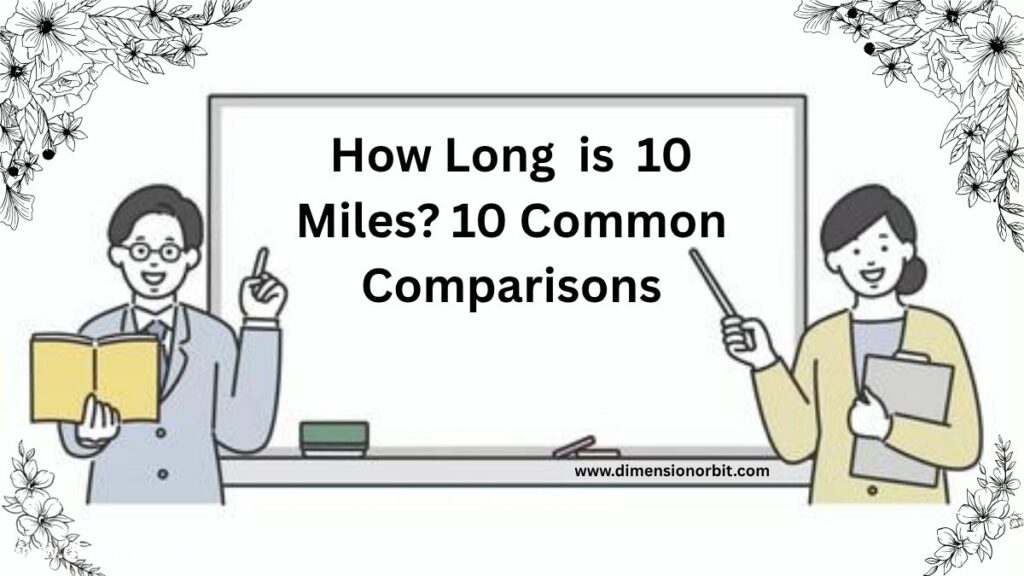Have you ever tried to imagine how long 10 miles really is? It’s a question that pops up more often than you might think. Whether you’re planning a hike, calculating a running route, or trying to understand distances between cities, visualizing 10 miles can be tricky. Ten miles isn’t just a random number it’s a tangible length that influences how we perceive travel, exercise, and geography. This guide dives deep into what 10 miles actually means, exploring everyday comparisons that make this distance easier to grasp.
the True Length of 10 Miles
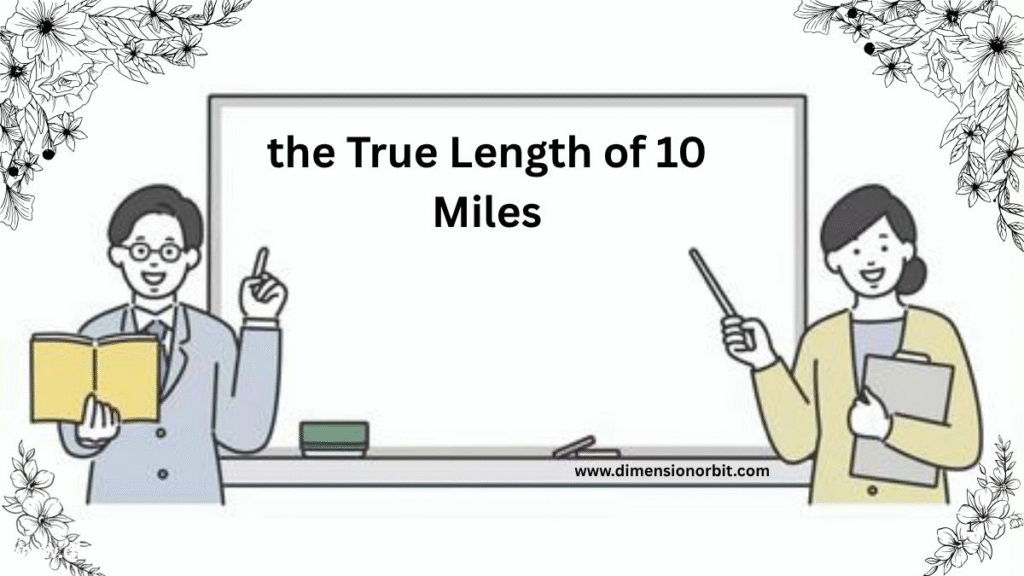
Before comparing it to real-world examples, it helps to translate 10 miles into a more familiar metric. Ten miles equals exactly 16.093 kilometers, though most people round that to 16.09 km. In other words, every mile equals 1.609 kilometers. Knowing this makes it easier to switch between systems when reading signs or tracking progress on fitness apps.
So, how far is 10 miles in practical terms? That depends entirely on your mode of travel. A person walking at a steady pace of about 3 miles per hour would take roughly three hours and twenty minutes to cover 10 miles. Someone running at a pace of nine minutes per mile could complete it in about an hour and a half. A cyclist traveling at 15 to 20 miles per hour would need around half an hour. And for drivers, that same distance might take anywhere from ten to thirty minutes, depending on traffic.
These numbers help you understand not just how long 10 miles is on paper but how it feels in motion.
13 Common Things That Are 36 Inch Long or Big
A Typical Urban Commute

For millions of people in large metropolitan areas, 10 miles is an everyday journey. In cities like Los Angeles, Chicago, or Houston, a one way commute can easily stretch to that distance. On a clear road, it might take only fifteen minutes to drive. But in rush hour, those same 10 miles can feel endless sometimes dragging out to half an hour or more. It’s a perfect example of how distance can stay constant while our perception of it changes depending on circumstances.
When you think of your daily drive or ride to work, imagine covering 10 miles every morning and evening. Over a week, that adds up to 100 miles, showing just how significant that distance becomes when repeated daily.
Equivalent to 40 Laps Around a Standard Track
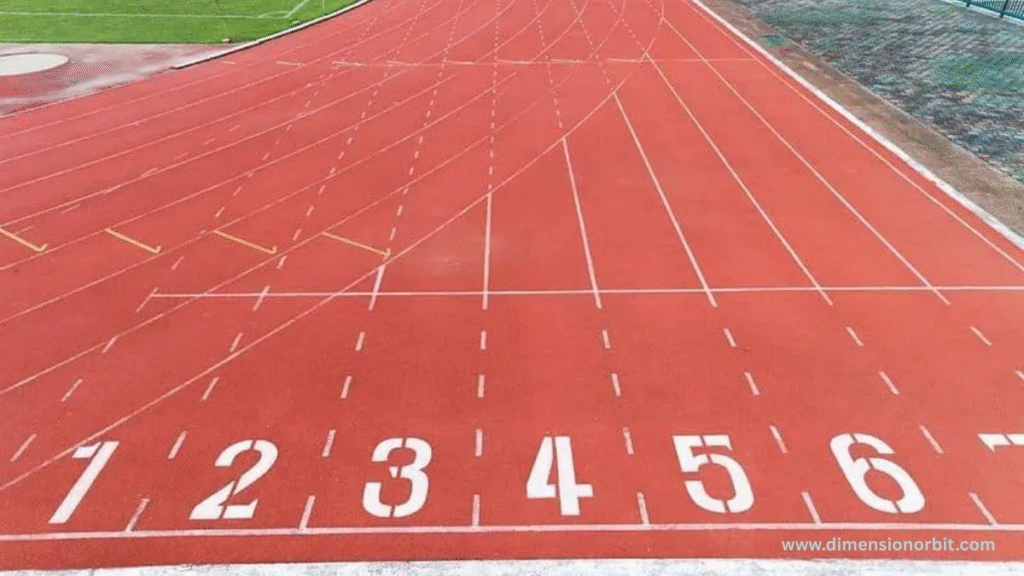
If you’ve ever run on a school or stadium track, you already have a tool for visualizing distance. A standard track measures 400 meters per lap. Multiplying that by four gives 1600 meters, which is almost exactly one mile. To reach 10 miles, you’d need to complete 40 full laps and just a tiny bit more.
That’s a powerful way to picture 10 miles, especially for athletes or anyone familiar with running circuits. It’s the kind of comparison that takes an abstract number and transforms it into something you can see, feel, and measure under your feet.
Almost the Length of Manhattan Island

New York City’s Manhattan Island stretches approximately 13.4 miles from its southern tip at Battery Park to its northern edge near Inwood. Ten miles covers roughly three quarters of that distance. Picture yourself walking from Battery Park through the Financial District, past Times Square, and toward Harlem that’s about 10 miles.
It’s a vivid comparison because Manhattan is packed with recognizable landmarks and bustling streets. Walking or biking that stretch would take around two to three hours depending on speed and stops. It’s an excellent mental image for what 10 miles looks like in a compact, urban setting.
Half the Width of the English Channel
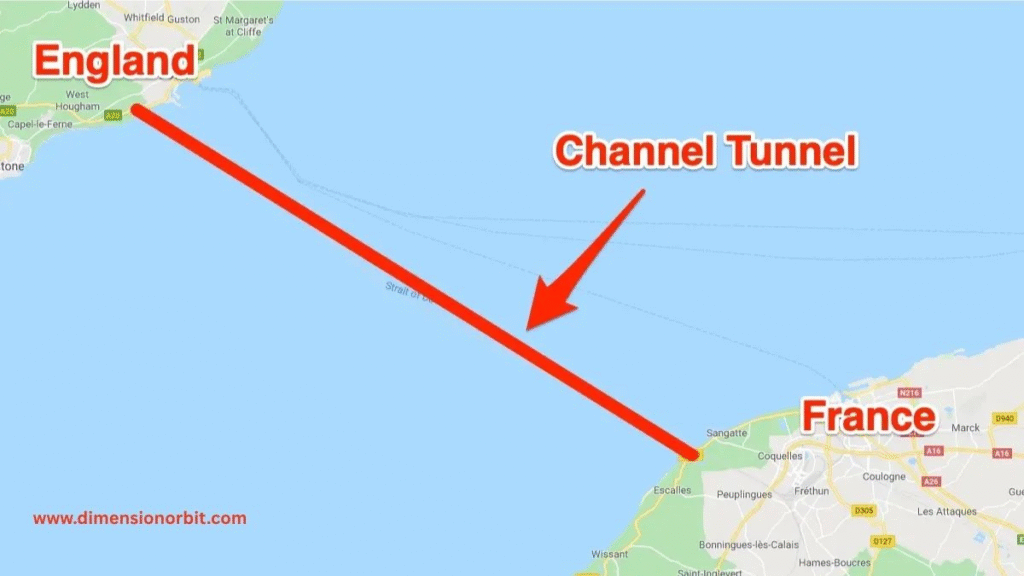
The English Channel separates southern England from northern France, with its narrowest point between Dover and Calais measuring about 21 miles. Ten miles, therefore, represents nearly half that crossing.
Visualize yourself on a small boat or even swimming halfway across the Channel. That’s what 10 miles looks like over open water a distance that suddenly feels vast and impressive when placed in that context. For endurance swimmers, covering even that half would be a remarkable feat.
Equal to 176 Football Fields

Sometimes the best way to visualize distance is to break it down into smaller, familiar units. A standard American football field, including end zones, measures 360 feet in total length. Ten miles equals 52,800 feet. Dividing one by the other gives roughly 146 football fields end to end. If you use only the 100 yard playing area (300 feet), you get about 176 fields.
Imagine standing at one goal line and looking down the length of nearly 200 fields lined up in a row. It gives a surprisingly physical sense of just how far 10 miles truly is.
| Measurement Type | Distance Covered | 10 Miles Equivalent |
|---|---|---|
| Yards | 17,600 | 176 fields |
| Feet | 52,800 | Continuous stretch |
| Kilometers | 16.09 | Metric conversion |
The Grand Canyon Rim to River to Rim Journey
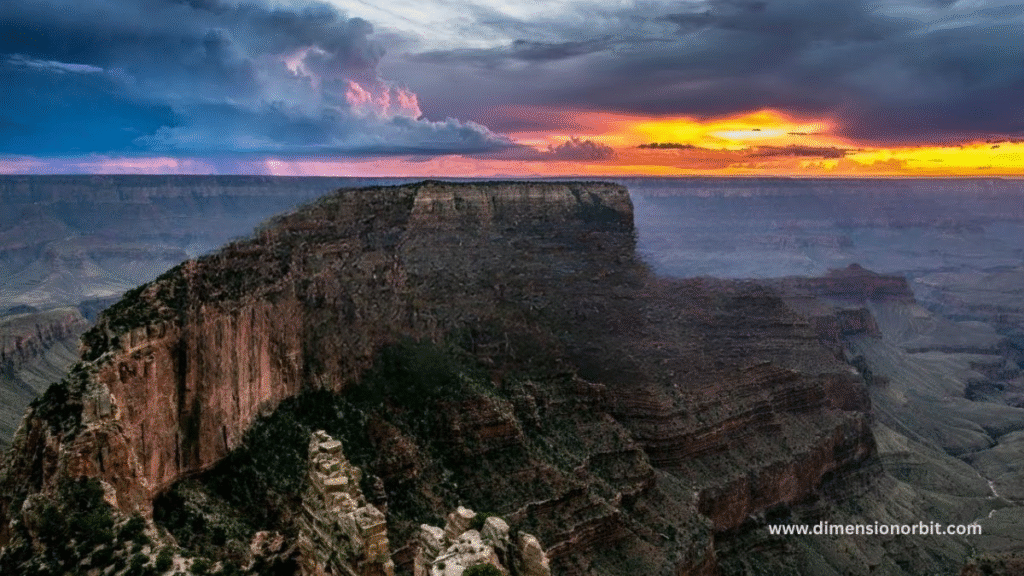
For hikers, one of the best ways to grasp the meaning of 10 miles is through the Grand Canyon. The South Kaibab Trail stretches about seven miles from the rim down to the Colorado River. Add part of the ascent back up, and you’re looking at roughly ten miles of strenuous, breathtaking terrain.
The challenge isn’t just the horizontal distance it’s the elevation change of nearly 4,800 feet. That makes 10 miles feel entirely different when you factor in steep climbs and descents. It’s a perfect example of how terrain can transform how a distance feels in your body.
12 Everyday Items That Are Approximately 40 cM Long
Almost Two and a Half Professional Golf Courses

If you’ve ever played a full round of golf, you already have an idea of distance in your mind. A professional 18-hole golf course typically measures around 7,000 yards, which equals roughly four miles. That means 10 miles is equivalent to about two and a half golf courses.
Walking that many holes back-to-back would be a serious workout. Golfers who walk instead of using carts already cover several miles each round, so doing 10 miles would mean walking multiple rounds in a single day. It’s a good analogy for understanding the distance in open, walkable terrain.
13 Common Things That Are 5 Inch Long
The Range of a Professional Drone

Modern commercial drones have become powerful enough to travel long distances before needing a recharge. Many have operational ranges between five and ten miles under ideal conditions. For instance, a DJI Mavic 3 can reach up to about nine miles before losing signal. That means 10 mile represents the upper boundary of what most drones can achieve within line-of-sight limits set by aviation authorities.
Thinking about 10 mile from a drone’s perspective puts the distance into the sky it becomes the invisible thread connecting operator and machine, stretching as far as current technology allows.
A Single Segment of the Panama Canal

The Panama Canal is approximately 50 miles long from the Atlantic to the Pacific. A 10 mile section, therefore, accounts for about one-fifth of the canal. A ship traveling through one of those segments might take an hour and a half depending on the traffic and time spent waiting at locks.
It’s a reminder that even industrial giants like cargo ships and tankers perceive 10 miles as a measurable journey. In the vast system of global shipping, 10 miles can represent a critical step in a multi day voyage.
A Realistic Distance for Runners and Cyclists
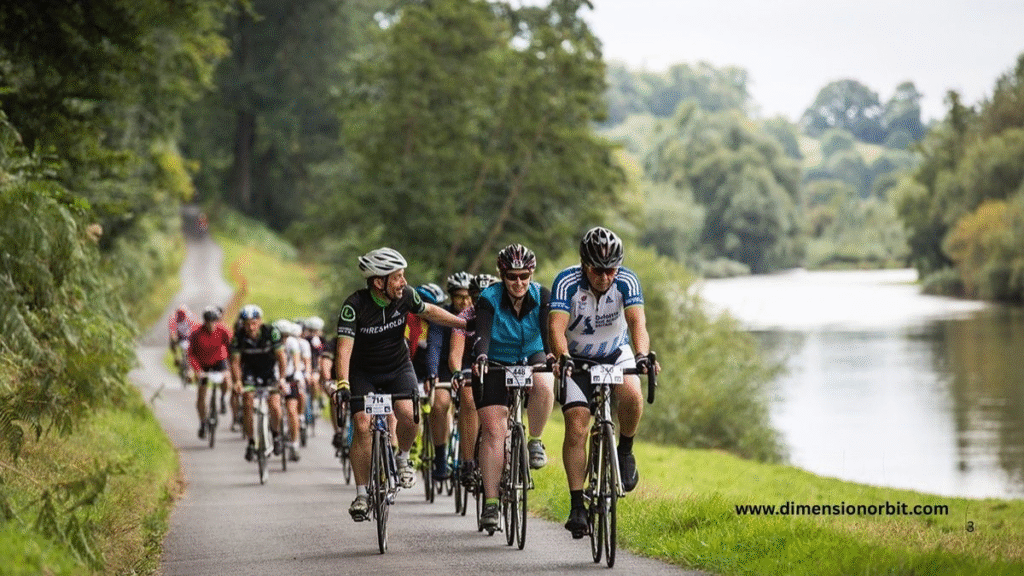
In the fitness world, 10 miles often marks a milestone. For new runners, it’s a major goal. For experienced athletes, it’s a training staple. Many cities even host 10 mile races as a bridge between the 10K and the half marathon.
Cyclists see 10 miles as a warm-up or short ride, while walkers might treat it as a day’s hiking adventure. To put that into perspective, walking 10 miles burns around 700 to 1,000 calories depending on body weight and pace, while running it could double that. For anyone building endurance, it’s a meaningful challenge that pushes the body without being extreme.
Visualizing 10 Miles Without Tools

Even if you don’t have a ruler or GPS app handy, you can still estimate 10 mile using time and familiar landmarks. Walking at a moderate pace for three hours will bring you close. If you live in a city, look at how far it is between suburbs or neighborhoods those gaps often measure between 8 and 12 miles. Many delivery drivers, postal routes, and even school bus rides cover roughly 10 mile daily, which helps create benchmarks.
The more you connect these examples to your everyday life, the easier it becomes to recognize distance instinctively. You start to feel what 10 mile means rather than needing to calculate it.
Comparison Table: How Long Is 10 Miles in the Real World
| Real-World Example | 10 Miles Equivalent | Description |
|---|---|---|
| Standard track | 40 laps | 400-meter track distance |
| Manhattan Island | About three-quarters of its length | Battery Park to Harlem |
| English Channel | Half of the narrowest crossing | Dover to Calais span |
| Football fields | 146–176 fields | Depending on inclusion of end zones |
| Grand Canyon hike | Rim to river to rim route | Includes elevation changes |
| Golf course | Two and a half courses | Average 7,000-yard length |
| Drone flight | Maximum legal range | High-end commercial models |
| Panama Canal | One-fifth of the canal | Based on total 50 mile length |
Digital tool
Digital tools like Omni Calculator can convert inches to centimeters or feet instantly. Many smartphone apps now offer augmented reality measuring features, allowing you to gauge objects virtually and compare them to known lengths.
FAQs
How many kilometers are in 10 miles?
Ten miles equals about 16.09 kilometers when converted to metric units.
How long does it take to walk 10 miles?
A person walking at an average speed of 3 mph would need roughly three hours and twenty minutes to complete 10 miles.
How many laps on a track make up 10 miles?
It takes approximately 40 full laps around a standard 400 meter track.
Is 10 miles a long distance to run?
For casual runners, yes it’s a significant endurance challenge. For trained runners, it’s a common race distance that sits between a 10K and a half marathon.
How many football fields equal 10 miles?
About 146 to 176 football fields, depending on whether you include end zones in the calculation.
How long would it take to drive 10 miles?
If you’re driving at 60 mph on a highway, it takes about 10 minutes. In city traffic, it could range from 20 to 30 minutes.
How many steps are there in 10 mile?
It varies by stride length, but most people take between 20,000 and 22,000 steps to cover 10 mile.
Putting It All Together
Ten miles is more than a measurement; it’s a distance you can feel, imagine, and experience in countless ways. It’s the length of most urban commutes, the challenge of a canyon hike, the range of a drone, and the scale of industrial waterways. Whether you’re on foot, behind the wheel, or in the air, those 10 mile can look completely different yet remain the same measurable stretch of land, water, or sky.
So the next time someone asks how long is 10 miles, you can tell them it’s like walking most of Manhattan, running 40 laps around a track, or traveling half the English Channel. With those mental images in mind, 10 miles becomes more than a number it becomes a distance you can truly picture.

Jhon AJS, the author of Dimension Orbit, is an experienced blogger fascinated by the mysteries of existence. He explores every type of dimension from scientific to spiritual with clarity and creativity. Jhon’s engaging writing style invites readers to think deeper, question reality, and discover new perspectives on the universe.

